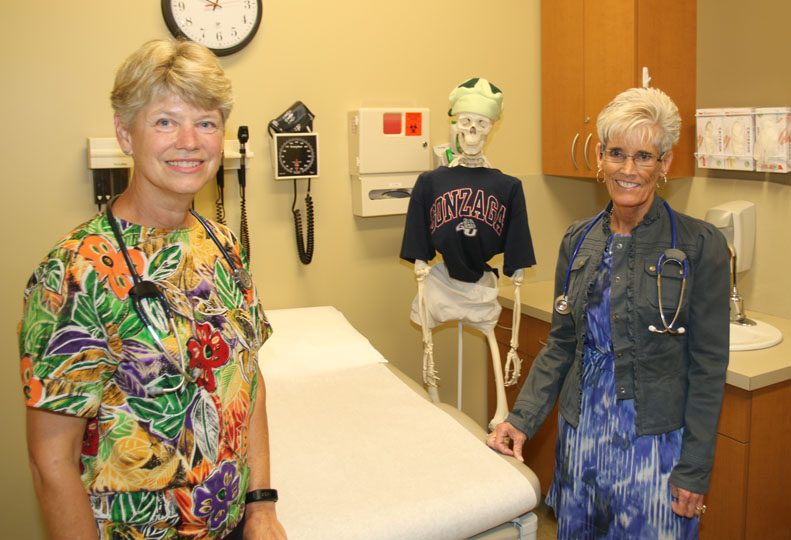Young Gonzaga nursing program attains full accreditation
More than 130 health professionals enrolled

The Commission on Collegiate Nursing Education, in Washington, D.C., has granted full accreditation to Gonzaga University’s Doctor of Nursing Practice Program for the next five years. It’s the first accreditation granted to the two-year old program.
“We came through this without any recommendations for change, and that is very rare,” says Brenda Stevenson Marshall, the university’s dean of the school of nursing and human physiology. “It is an affirmation of the excellence faculty bring to this advanced practice nursing degree. It is obvious that we are qualified to develop a curriculum that speaks to the increased level of knowledge and growing complexity of the nursing profession.”
Five years is the maximum accreditation time granted by the CCNE to newly formed programs.
Discussion for creating the doctor of nursing program began in 2008, and a strategic plan was put in place in 2010. The first students in the program started in January 2013, Stevenson Marshall says.
Jane Tiedt, Gonzaga’s graduate nursing program director, says 132 students currently are enrolled in the program. Seven people have graduated so far, with the first student completing the program in fall semester 2014.
The accreditation process involves measures of program quality and effectiveness, mission and governance, institutional commitment, curriculum and teaching, and achievement of program outcomes.
Stevenson Marshall says the accreditation affirms its objectives to prepare nursing professionals to become specialized leaders in a rapidly evolving field.
Gonzaga’s new program is not a Ph.D. program, Stevenson Marshall notes. “Our doctorate of nursing program is a clinical doctorate nursing practice, not a doctorate of nursing research,” she says.
The program requires students to conduct a major scholarly research project to identify problems or inefficiencies in their areas of practice, whether as family nurse practitioners, family psychiatric mental-health nurse practitioners, or health system leaders, Stevenson Marshall says. They then use their research to make positive changes, she says.
The goal is to create new research-based improvements that will become available to practicing nurses. The program also strives to create better overall care for patients by offering education at the same level for nurse practitioners, pharmacists, physicians, and physical therapists, Stevenson Marshall says.
“The objective is for nurses to study and fill in gaps in medical treatment,” she says.
Nearly all students currently enrolled in the doctor of nursing program are either part- or full-time practicing nurses, and work is completed in the field and online. Their classrooms and research are mainly on the job. The program has drawn students from around the U.S., though most are in the Pacific Northwest, Tiedt says.
“Before they graduate, they’re required to come to campus six times to be observed by department faculty,” she says. The length of time it takes to complete the doctor of nursing program is two to three years, depending on the student’s work schedule.
Previous graduates have gone on to implement more advanced screening tools in domestic-violence cases, enhance diabetes care in primary coverage, improve telephone triage, and foster better follow-up with children patients after surgery, Tiedt says.
Stevenson Marshall says, “Their work spans the continuum of the medical field.”
Kathy Manion, a nurse with Providence Health Care and a lecturer at Gonzaga, is working toward completing her doctor of nursing at the university. Manion previously spent 30 years working as a cardiac nurse. For her research-based project, she wants to develop an educational program for health care workers that helps them to differentiate between palliative care and hospice care.
“Hospice care is when there is a terminal diagnosis with a prognosis of less than six months,” Manion says. “In palliative care, a chronic, complex diagnosis may go on to be terminal though not always.”
“Unfortunately, what I have seen is that there is confusion among health care professionals in differentiating between palliative and hospice as it relates to patients suffering from chronic heart issues,” Manion says.
Related Articles
Related Products




